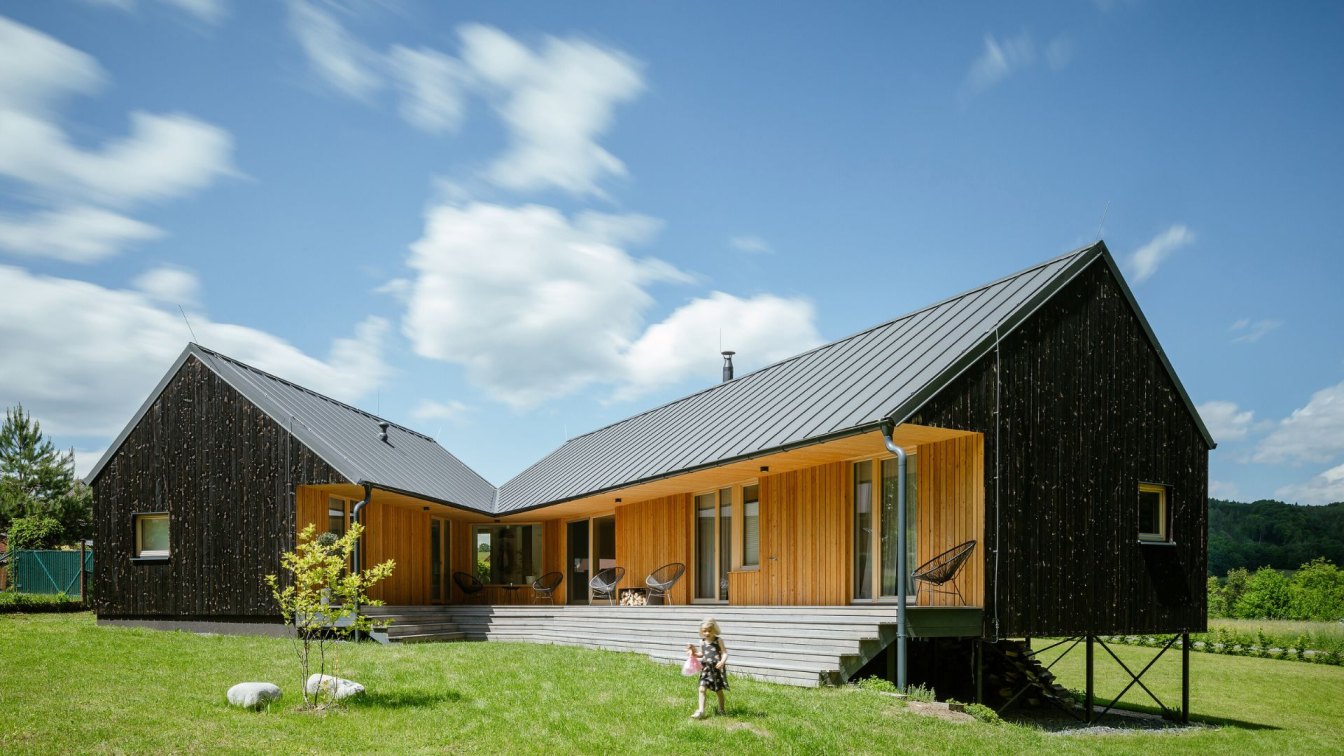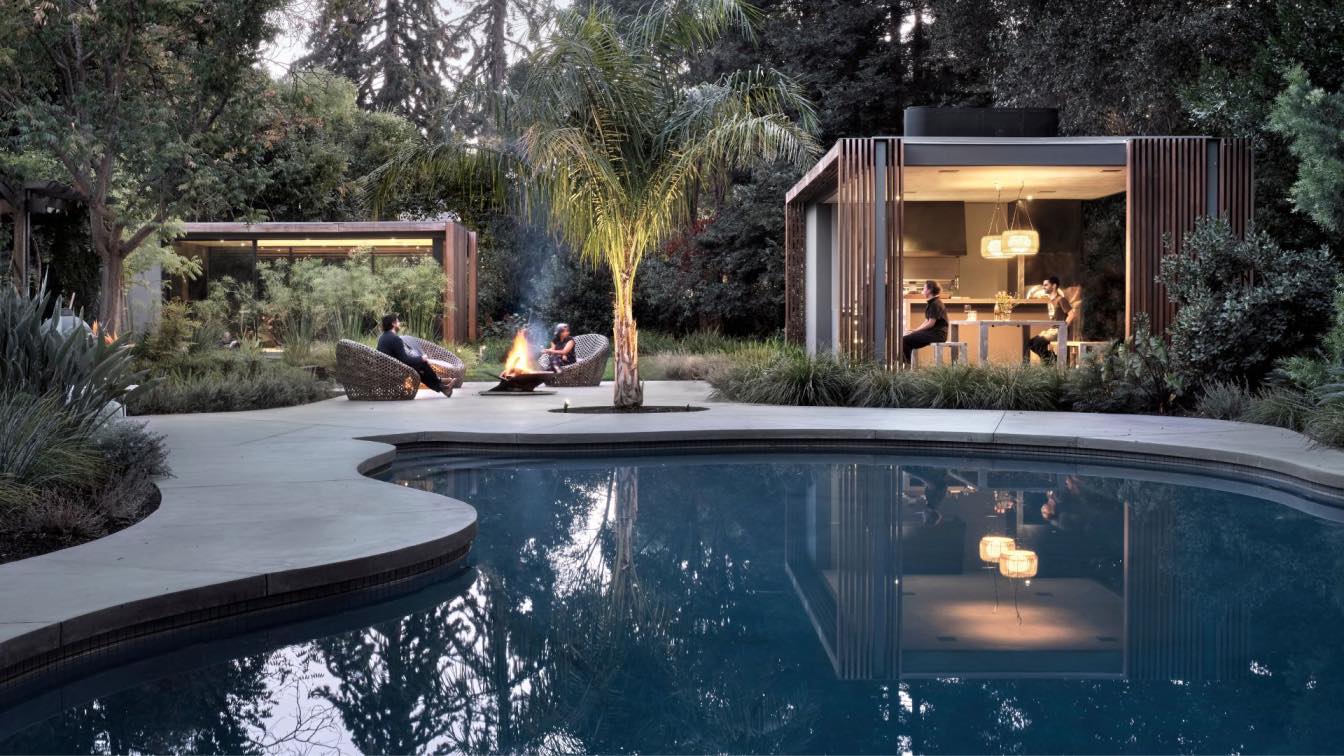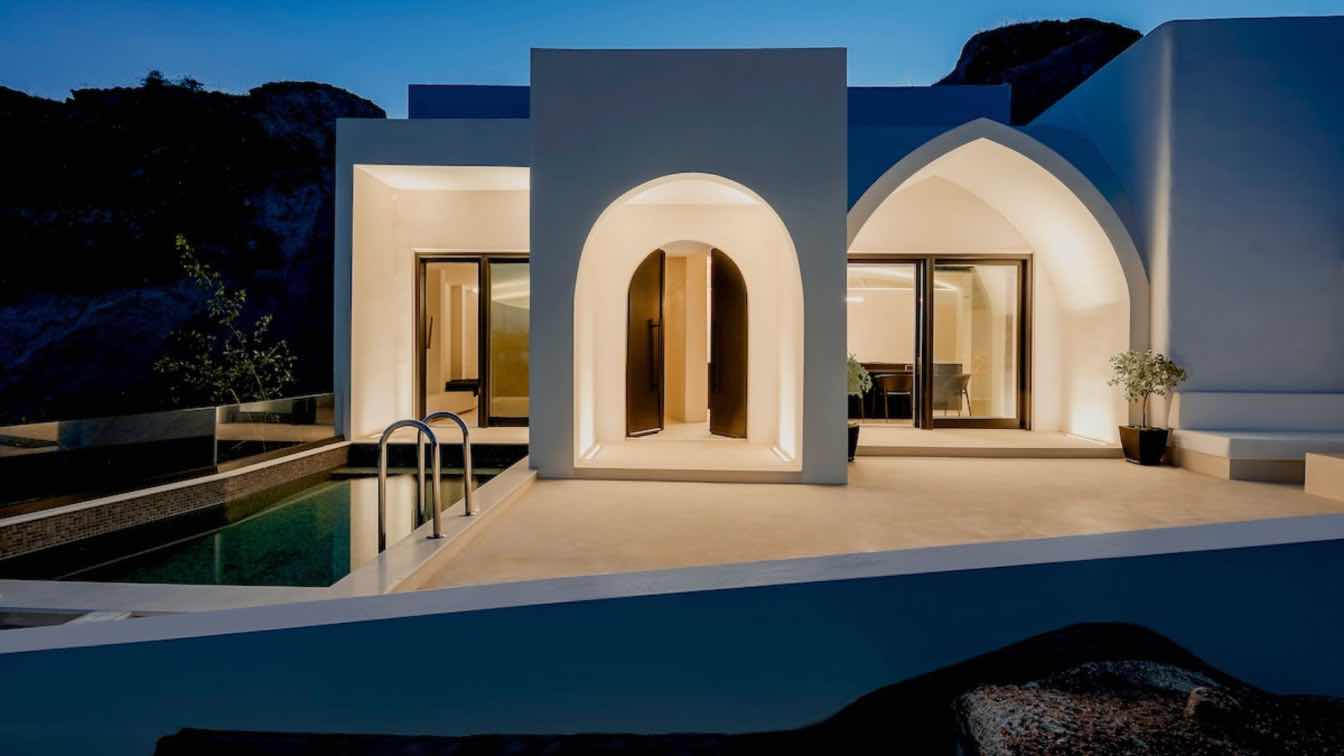KLAR: Place
Located on the south edge of the Rybí village, Moravian-Silesian Region, the building site is marked out by the edge of the access road, the local stream and neighbouring property fencing. It is a sizeable plot of land, but with a significantly reduced buildable area. The shape of the future house is in fact largely predetermined by the minimum required setbacks from existing underground gas storage tanks and from the forest edge.
Sloping gently to the southeast, the site offers picturesque views of the surrounding pastures, woods, and village houses. The access road crosses the stream at the lowest point of the site and there is a small wayside cross with a simple bench. This spot is accessible to the public despite being on the clients’ property. For centuries, it has been part of the Way of the Cross from Nový Jičín to Štramberk.
Brief:The clients specified that the building program should include a home for a family of four and a separate unit for their grandparents. They wanted the house made of wood and also sustainable in the sense that it should be easy to build and cost-effective in operation. They also wanted to be able to build the house themselves, at least partially.
Concept: There are almost no neighbouring buildings around this greenfield site that would define structure or form. Two pitched-roofed catalogue houses are standing close by, the rest of the village is a mix of detached single-family homes from various periods. Answering the question: “What should the new house look like?” was quite difficult in this case. After considering the budget limitations, program requirements, and the preferred choice of a wood structure building, our final decision was to adopt a rational approach with repeating structural elements.
Two elongated volumes with pitched roofs are joined together at an angle and placed on the edge of the buildable area, defined by the setbacks. At first glance, this shape can appear to be reminiscent of the Beskydy region’s typical small single-story home with a pitched roof. The solution with two wings works well to separate the family home and the future in-law suite. A south-facing private courtyard is formed inside the angle, protected from the north and overlooking a nearby forest. Shaded by the roof overhang, a wide deck stretching all the way along the house connects it with the courtyard, offering endless possibilities to sit, relax and listen to the sounds of running water, rustling leaves, or distant hum of village life. Mature trees growing around the stream provide shade from the hot summer sun, but their bare branches let in enough sunlight to reach the house in winter.

Layout: The two wings intersect at the vestibule. This room gives a good overview of both wings, the courtyard and the deck, acting as a metaphoric entrance signpost. From the vestibule, on one side a door leads to the main living area, while on the other we enter a corridor to the in-law suite. The corridor goes along the east side of the in-law suite and provides access to the mechanical room, the smaller bathroom and the grandparent’s bedroom. It also connects this wing to the deck.
Entering the family wing from the vestibule, we reach a double-height, open-plan living area with dining and cooking. Providing enough views inside and outside the house was emphasised here and everywhere around the building. From the cooking area, a horizontal strip window overlooks the entryway, while a wide window seat in the living area offers views of the landscape beyond. A corridor connects the living area with the private zone consisting of the children’s bedroom, the main bathroom and the main bedroom. The open-plan living area and the bedrooms all have direct access to the deck.
Structure and Materials
Load bearing structure: The house was erected using the 2-by-4 structural system, mineral wool insulation and structural OSB board sheathing. The dominant interior finishes are natural 3-layer spruce solid wood panel and white gypsum board. The bedrooms have oak flooring, the corridors and bathrooms ceramic floor tiles.
Foundations: The foundations are divided into two sections. The in-law suite uses reinforced concrete strip foundation while the family home is raised from the ground on thin steel stilts. This gives a certain lightweight quality to the building, reducing its scale and impact on the soil.
Heating: The house is fitted with water underfloor heating powered by an electric boiler. Additional heating with a wood-burning stove is available in the living area, and a heated towel radiator in the bathroom.

































About studio
We appreciate the places we grew up in and we aim to reflect that in our work. We see architecture as a complex discipline that deals with functional, aesthetic and contextual questions. Artistic exhibitionism has no place in architecture. Founded by Václav Kocián and Zdeněk Liška in Kopřivnice, 2017, KLAR architecture studio works on all project scales.





